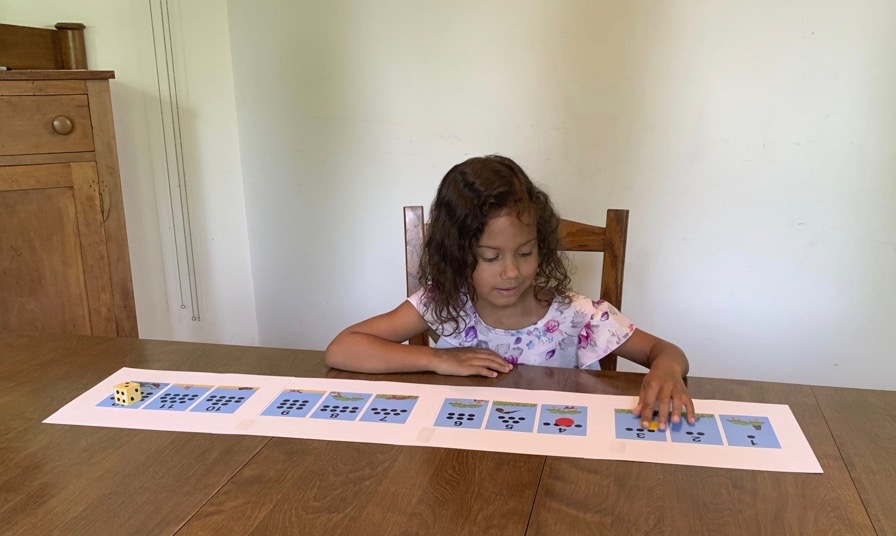2+ Players
Moderate teacher engagement
Materials
- A game piece for each child (for example, a toy frog, toy airplane, counting chips of different colors)
- Die, number spinner, These can be playing cards or dot cards; players should use numbers 1 to 6 to start.
- Gameboard: use one of the provided boards by combining printout into the board or create your own (you can start with 12 boxes), making sure that the boxes on the board have numerals printed in a sequential order and that they are not laid out in a circle. Use this document to extend your gameboard to 18.
- A set up number cards with numbers 1-12 for each child
Setup — Less than 5 minutes
Gather the materials.
Instructions
- Each child chooses a unique counter as their game piece and places it at the beginning of the path on the START space.
- Each child rolls a die on their turn. Before moving the piece, every child predicts what number the piece will land on after counting the amount on the die. Then, they hold up the number card to show what number they think they will land on. For example, if a child is on 2 and rolls a 4, children would hold up the 6 number card before the child moves their game piece
- Move the piece the number of spaces on the die. Check to see if children’s predictions are correct
- Repeat turns until all children reach the final box.

Checks for Understanding
To deepen children’s learning about early math concepts, talk and ask questions while doing this activity together. Here are some examples to get you started.
- “How many boxes are you supposed to move forward?”
- “Can you count as you move to make sure you go the right number of boxes forward?”
- “You rolled a 1 and you are on the 7 box. What is the number after 7?”
- “What number should you say first when you start counting?”
- “How do you know how many boxes to move forward?”
- “How many boxes have you moved forward altogether?”
- “What number will you be on when you move forward two boxes?”
- “How many more do you need to get to the end? You rolled a 1. Will that be enough to get to the end? How do you know?”
Activity Modifications
Once you have tried the activity, here are some other things you can do. Try these modifications to keep the activity interesting and challenging for children all year.
- Monarch Migration : Use this special game board to play a version in which children are monarch butterflies migrating from their summer home in the North American forests (beginning of path) to their winter home in the mountains in Michoacán, Mexico (end of path). The spaces represent the different habitats monarch butterflies pass through while migrating (forest, grassland, desert). When a child lands on a box, they act out the animal on that box, which lives in the indicated habitat.
- Create a board with two parallel short paths, one for each child, to help prevent children from confusing their counters.
- Use a blank, unnumbered game board to orient children to the game before using a numbered path.
- Use a die you make yourself out of a cube block – put numbers 1 and 2 only on die if children are having a hard time adding, or numbers 0-5 to introduce the concept of 0
- Add spaces on the board that direct children to take different actions (for example, a box that makes children go backward).
- Modify the length of the path. Longer paths allow children to practice counting larger numbers.
- Instead of having each child use a game piece, use just one game piece and have all children play using that game piece. Everybody wins when the game piece wins.
- Have pairs of children use a single counter. On each turn, have both children roll a die, discuss which roll will help them get to the end the quickest, and then choose one roll to use.